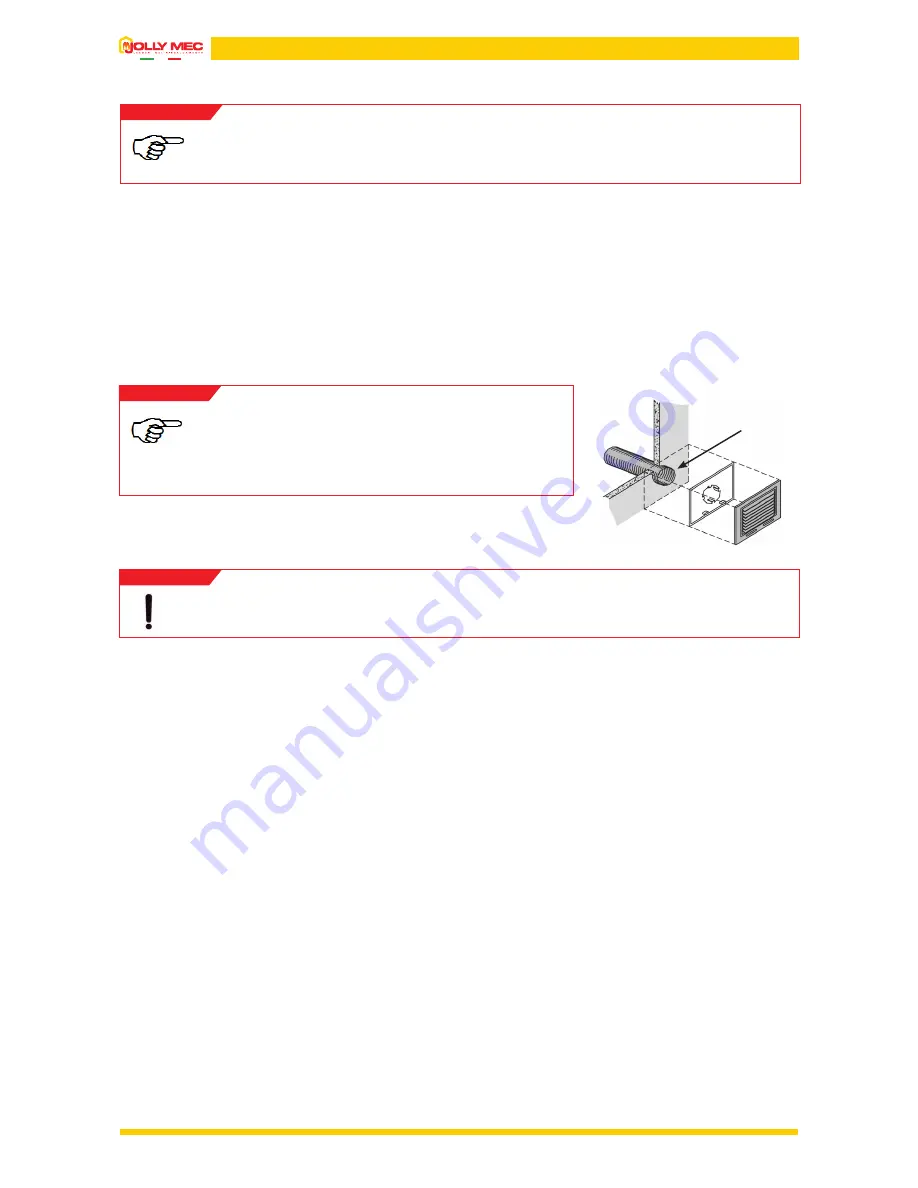
24
07.7
EXAMPLE OF AIR DUCTING IN THE VARIOUS ROOMS
The air pipes must be brought to the rooms to be heated.
From every room where hot air is ducted, the air must return to the stove room through openings beneath the doors or vents, which must
be taken up again by the grid behind the stove.
Air is distributed with flexible circular pipes in aluminium Ø 60mm. The pipes must be fastened to the unions with pipe clamps.
Pipe insulation is vital for the stove’s performance. They must be wrapped with glass wool pads (minimum thickness 3 cm) along its
entire length.
Warning: makes sure that pipes do not contact wood and inflammable materials.
It is also very dangerous to use plastic pipes to distribute air since the high temperatures could deform them and release harmful gases.
Where it is impossible to wall up the distribution pipes, they can be hidden with a suspended ceiling, fake beams or casing.
The space (
A
) between the vents and the wall must be hermetically sealed with silicone, to
prevent leaking air from blackening it due to heat (for instance smudges above radiators).
To duct air into the other rooms, connect the pipe to the stove’s rear outlets in order to distribute the air inside all
rooms. The air can be balanced with the grids with adjustable closures.
NOTE
It is vital to build a balanced air ducting system (the length of the
ducting pipe should not exceed 6 meters), so as to achieve both excellent
heat distribution and performance in all ducted rooms.
It is also recommended, in order to improve further the distribution and
decrease the noise of the ducted air, to use pipes with a smooth inside.
NOTE
IMPORTANT: Use a neutral cure silicone seal
WARNING
Please see AD136 for assembling the canalisation fan.
A






























